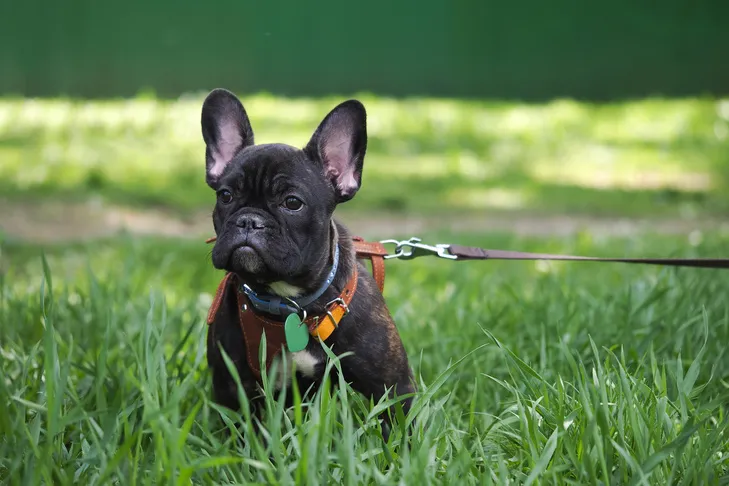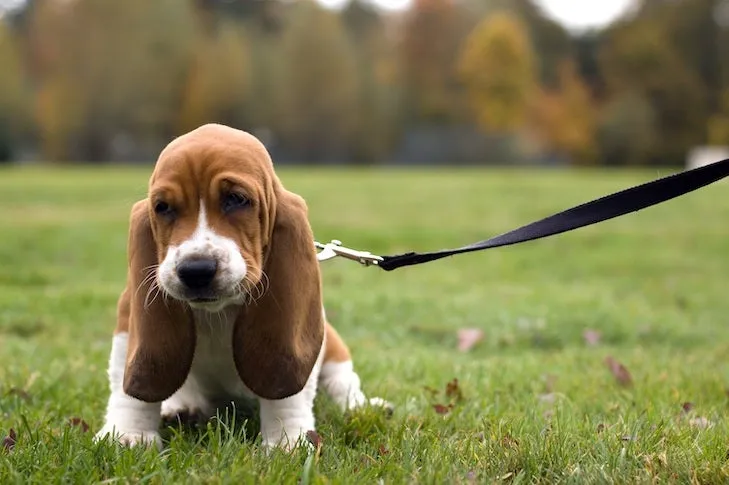Many new puppy owners assume that dogs instinctively know how to walk politely on a leash. However, this essential skill is something that must be carefully taught and reinforced over time. Mastering loose-leash walking is not only crucial for your puppy’s safety and socialization but also ensures a much more enjoyable experience for both of you during walks. By establishing a solid foundation for leash manners early on, you can set your puppy up for a lifetime of pleasant excursions. This guide will walk you through the necessary steps, from initial introductions to troubleshooting common issues, helping you confidently get your puppies used to a leash.
Laying the Foundation: Early Leash Training Steps
Starting early and building positive associations are key to successful leash training. Patience and consistency are your best tools in this process, ensuring your puppy views the leash as a gateway to fun and adventure, not a constraint.
Introducing the Collar, Harness, and Leash
The very first step in How To Get Puppies Used To A Leash involves making them comfortable with their gear. Begin by letting your puppy wear a lightweight collar or a comfortable harness for short periods inside the house. During these times, engage them in play and offer plenty of delicious treats. The goal is to create a positive association, where “collar-and-leash time” signals fun activities and tasty rewards. This initial comfort is vital before you even think about attaching the leash for a walk.
Teaching a Rewarding Sound Cue
Next, introduce a consistent sound cue that signifies “food is coming.” This could be a clicker sound, a specific word like “yes,” or even a tongue cluck. Practice this in a quiet, distraction-free environment. With your puppy wearing their collar and leash, make the sound. The moment your puppy turns their head or looks in your direction, immediately reward them with a treat. After several repetitions, your puppy will begin to anticipate the treat and not only look at you but also start moving towards you when they hear the cue.
 French bulldog puppy in a harness sitting in tall green grass on a leash for a walk.
French bulldog puppy in a harness sitting in tall green grass on a leash for a walk.
Encouraging Your Puppy to Come to You
Once your puppy understands the sound cue, you can start incorporating movement. While they are on their way to you, still wearing the leash and collar, back up a few paces. Reward them generously when they reach you. Gradually increase the distance, always using your cue and backing away, until your puppy consistently comes and walks with you for a few steps after hearing the sound. Remember that puppies have very short attention spans, so keep your training sessions brief and always end on a positive note, leaving them wanting more rather than feeling exhausted.
Practicing Leash Walking Indoors
With the “come” command established, it’s time to practice walking a few steps in a quiet room with minimal distractions. For a puppy, simply feeling and seeing the leash around them, even indoors, can be a significant challenge. Continue to offer treats and praise as your puppy learns to follow you willingly while wearing the leash. This controlled environment allows them to focus solely on the sensation of the leash and your guidance without being overwhelmed by external stimuli.
Graduating to Outdoor Walks
Finally, you’re ready to test your puppy’s emerging skills in the great outdoors. This step will present new challenges, as every sound, smell, and sight will be incredibly intriguing and new to your puppy. Be incredibly patient and keep these first outdoor walks very short. As you walk, remain vigilant. If your puppy shows signs of being about to lunge towards something or get distracted—you’ll notice this by keeping your eyes on them constantly—immediately use your cue sound and move a few steps away. Reward them with a high-value treat for following you, reinforcing that staying with you brings good things.
 Basset Hound puppy sitting in the grass on lead.
Basset Hound puppy sitting in the grass on lead.
Troubleshooting Common Leash Training Challenges
Even well-trained puppies can encounter issues as they grow, visit new places, and face increased distractions. Knowing how to address common leash-training problems will ensure you can maintain pleasant walks and continue to reinforce good habits. Successfully navigating these challenges is key to your puppy’s long-term leash success.
When Your Puppy Pulls on the Leash
If your dog begins to pull in the opposite direction, the most effective strategy is to become a “tree.” Stand perfectly still and refuse to move until your dog loosens the leash and turns back to you. Avoid yanking or jerking the leash, or dragging your dog along. This teaches them that pulling gets them nowhere, while a relaxed leash allows forward movement. For persistent pullers, alternative training tools such as front-hook harnesses or head halters can be incredibly effective in managing their strength and redirecting their focus.
Addressing Puppy Lunging
If your dog starts going after something on a walk—another dog, a car, a skateboarder—it’s important to be proactive. Anticipate the lunge before it happens. Try to redirect their attention with a treat the moment you notice them focusing on a potential trigger, before they have a chance to lunge. Increase the physical space between your dog and the target of their frustration. Stay alert and be prepared, creating distance and offering rewards before the trigger gets too close. Learning to prevent pulling and lunging early can save you a lot of frustration. This type of behavior can be common in certain breeds, like herding dogs, but any dog can be startled or overstimulated by new or exciting things.
Dealing with Puppy Barking on Walks
Some dogs develop a habit of barking excessively at other dogs or people during walks. Often, this behavior can stem from a lack of adequate physical or mental stimulation. Ensure your dog receives the proper amount of exercise and enrichment for their age and breed. If barking remains an issue, employ the same proactive strategy as you would for lunging. Create distance from the trigger and offer treats before your dog starts to bark. By consistently redirecting their attention to you whenever another dog appears, they will gradually learn to look to you for a reward instead of barking. This consistent positive reinforcement helps them manage leash pulling and barking behaviors effectively.
Over time, and with consistent practice, you will gradually reduce the need for constant treats and troubleshooting during your walks. It’s always a good idea to keep a few treats on hand to randomly reinforce good leash-walking behavior, ensuring that your puppy continues to associate positive experiences with being out and about on their leash. With patience and dedication, you and your puppy will enjoy many happy and controlled walks together.
